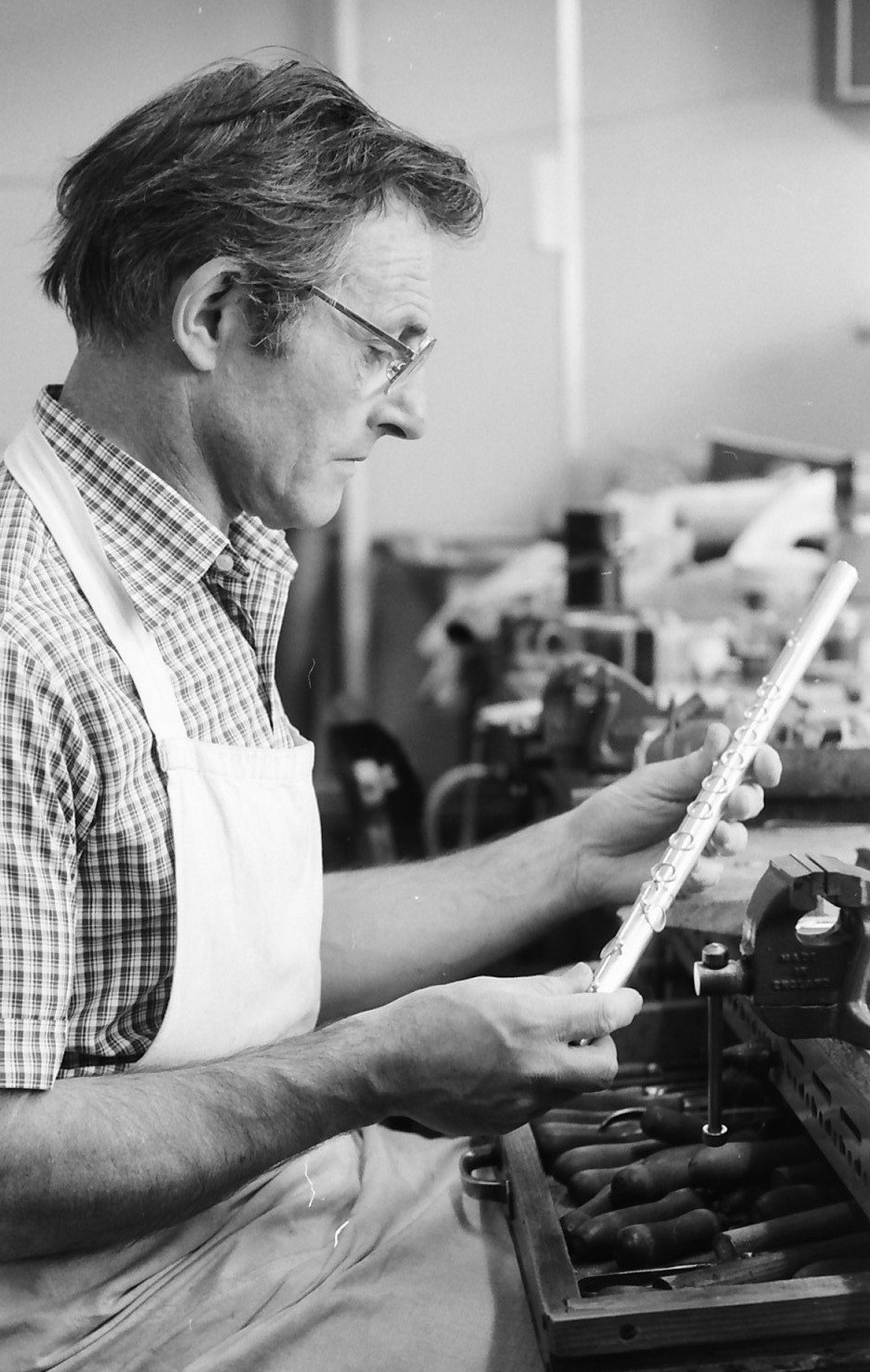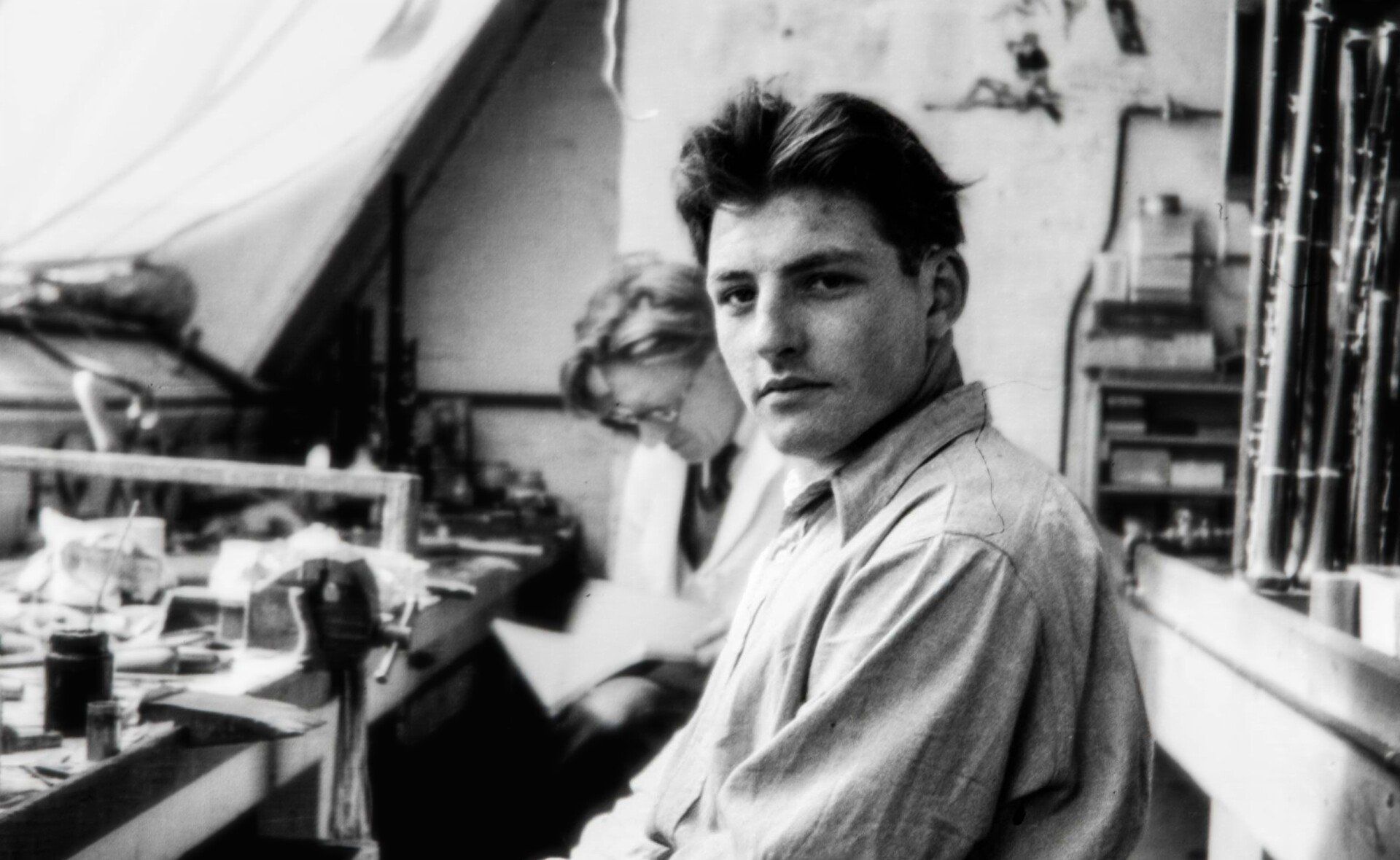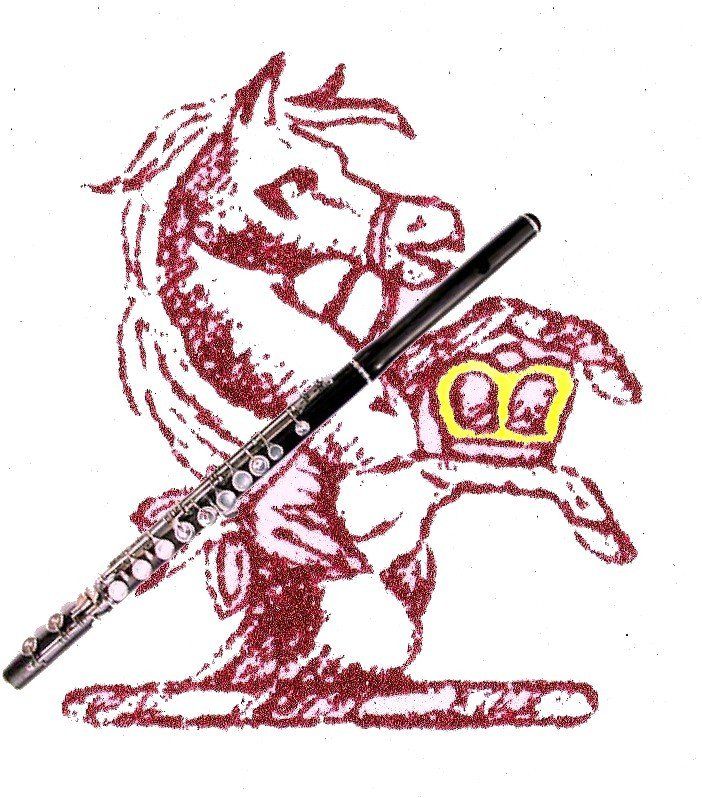Just before Angus Harris joined Rudall Carte, the company had been bought by Boosey & Hawkes, a company that was more concerned with mass producing barely adequate instruments than supporting the tradition of fine handmade craftsmanship. B & H made no investment into the Berners Street workshop. One of the craftsmen I spoke to couldn’t bring himself even to say its name. The greatest flutemakers of their generation were having to make do with worn-out treadle lathes and gas burners for soldering. The heavier machines on the floor below, including the wood lathes on which the bodies and headjoints were turned, ran from a belt just under the ceiling that set their floor shaking. When a flutemaker needed to do some fine work he would take a pole, drop it down through a secret hole that had been bored through the floor, and displace the belt, giving himself some peace until the belt was set right again.
In 1958 Boosey & Hawkes had a particularly bad year. They had bought up Wheatstone’s, the famous old concertina maker, and decided to close Berners Street and move the flutemakers there. A year later, in December 1959, cutting costs again, Boosey & Hawkes moved flutemaking to their Denman Street workshop, which was noisy and uncongenial. The older craftsmen retired. Angus left and went to work for Selmer’s in Charing Cross Road, where he enjoyed his time repairing the various wind instruments that came through the door, just as he had in his apprenticeship. He also got married to Maureen, a friend of his sister.
His old colleagues, meanwhile, were equally disillusioned with Boosey & Hawkes. In 1961 a group of them set up a new company, Flutemakers Guild (FMG). This was to be a return to fine flutemaking. Harry Seeley invited Angus to join them. Their new foreman was Ewen McDougall, who had begun his apprenticeship at Rudall Carte in March 1950. As before, each craftsman was responsible for a flute in its entirity. But the FMG workshop was equipped with modern tools, and the flutemakers wasted no time in improving working techniques as casting and soldering.
Demand for FMG silver flutes was strong from the start. In 1963 the company received an order for an 1867-Patent flute. The work naturally fell to Angus. But there were no castings – they had been lost when the Berners Street workshop had closed. So he had to make each piece of keywork individually. The result was the last of its kind, and remarkably it is still owned and played by the man who commissioned it.
Gradually, with the return to popularity of wooden flutes, Angus and his colleagues went back to the heritage in which they had been apprenticed. There were also commissions for piccolos, alto and bass flutes, and G-trebles. The company was so successful that it took on apprentices. Each maker had some little identifying design quirk. “I used to do something on the thumb Bb key,” Angus explained. “Going down from the head it will be round till you got to the barrel. Then it would go into a V till under the lever. Half and half. So if it’s half V and half rounded then it’s one of mine. I did that. Little things like that made them individual.”
Wages at FMG, however, hardly matched what a skilled craftsman might expect. And Angus’ commute to North London from his home in Wallington, Surrey, was hardly an easy one. Eventually he left to take a job at a Ford manufacturing plant just a ten minute walk from his back door. Maureen was astonished when she saw how much fatter his first wage packet was. Despite some trepidation at going to work in a large factory, he found the place congenial. “It was mainly small pressings for the door winding mechanisms,” Angus remembered; “and for the windows, brackets for springs, and all the smaller body panels.”
Angus worked for fifteen years at Ford, retiring in 1996. But his flute career was not over; in fact it was about to enter an Indian summer. On meeting up with Harry Seeley he learned that FMG was down to only two craftsmen, the younger flutemakers having left. The company had an overflowing order book for wooden flutes. Thus it was that Angus returned to the FMG workshop in Shacklewell Road, working three days per week and carrying parts home to continue work there. His standards were as high as ever, so if he noticed even the slightest imperfection in a flute he would take it all apart and start again. He also produced the cases, while Maureen made the pads, stamping felt with a circular cutter.
This final series of flutes by Angus Harris and Harry Seeley is widely regarded as the peak of British wooden flutemaking. Each body is thinned, so the wood is hand carved to leave the toneholes proud. This took a lot of very skillful work, but it gives these flutes extra resonance and decreases their weight. The late David Shorey regarded these as the finest wooden flutes ever made, and the list of customers reads as a who’s-who of international flautists.
Angus’ first flute in this series of seven was a commission from Sebastian Bell, after whose death it went to the USA where it later sold in New York for $14,000. Angus’ second made its way to Jonathan Myall, who says that one of his regrets is not keeping it for himself. Instead a prominent player, whiling away an afternoon in his shop, began blowing it and was surprised to be told shortly afterwards that he had been playing non-stop for several hours and the shop was about to close. The prominent player took out his cheque book and remains its proud owner.
The end of FMG came shortly after Harry Seeley was forced by ill health to retire. Angus completed his final flute in April 1999. “There were still orders for wooden flutes,” Angus recalled. “There was no shortage of work. It seemed to be that everyone wanted one. Many were orders from the continent, particularly Germany. It took off, but when you are down to two people you can’t produce them. It wasn’t a short job making a one. You’ve got to make the wooden body, and make the keywork and put it on - it’s a long job.”
Angus retired but continued to craft beautiful objects at home, including animal figures and a Welsh dresser for his wife. Maureen remembers him as ‘Meticulous, quietly-spoken, unassuming, with a keen sense of humour – a perfectionist.’ Roger Harris died on March 12th 2019. In Harry Seeley’s estimation, “Angus” was one of the finest of flutemakers, on the same exalted level as the great Fred Handke. His flutes, still so sought after, attest to that.





